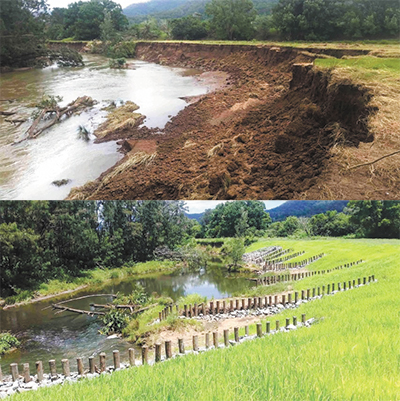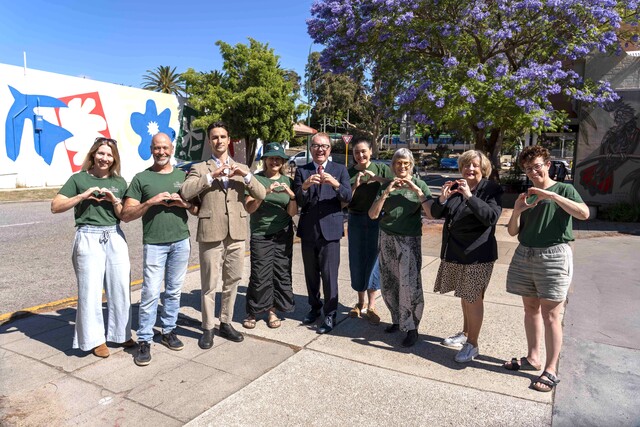Tweed Shire Council, New South Wales (NSW), is seeing results from an innovative project that involved working with three private landowners to deliver large scale earthworks and riverbank reconstruction at two sites along the Oxley River.
The Oxley River bank erosion stabilisation project won a 2018 Local Government NSW Excellence in the Environment award for Natural Environment Protection and Enhancement: On-Ground Works.
Ex-tropical cyclone Debbie left extensive damage and severe bank erosion at the sites, with banks left about seven metres high and prone to further slumping and erosion.
Around 250 recycled hardwood logs – some with root balls still attached – were installed by Council to stabilise the Oxley River banks and improve aquatic and riverside habitat.
They were driven four metres deep into the riverbed to provide bank protection and capture further sediments.
The logs were sourced through vegetation management contractors working on the Pacific Highway upgrade between Woolgoolga and Ballina.
Director Community and Natural Resources, Tracey Stinson, said since the project recycling large logs had now become standard practice for Roads and Maritime Services.
“It’s wonderful that these majestic big trees are being recycled and put to such good use.
“It’s lateral thinking such as this which is required to adapt to the effects of climate change.
“The landowners we partnered with have been glowing in their appreciation as the productivity of their farms has increased now they are not going to lose swathes of land to the river each time it floods.”
As part of the project, the Oxley River banks were battered to a stable grade and covered with erosion control matting.
More than 2000 native trees, shrubs and groundcovers were planted to provide long-term stability.
Riverside fencing was also installed to exclude stock from the two project sites.
Since the works were completed in December 2017, both sites have been extremely successful in preventing further erosion.
The project was funded through Council’s River Health Grant program, which aims to protect and improve water quality in the Shire’s drinking water supply catchment.








